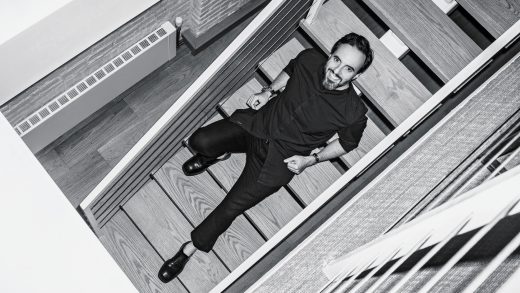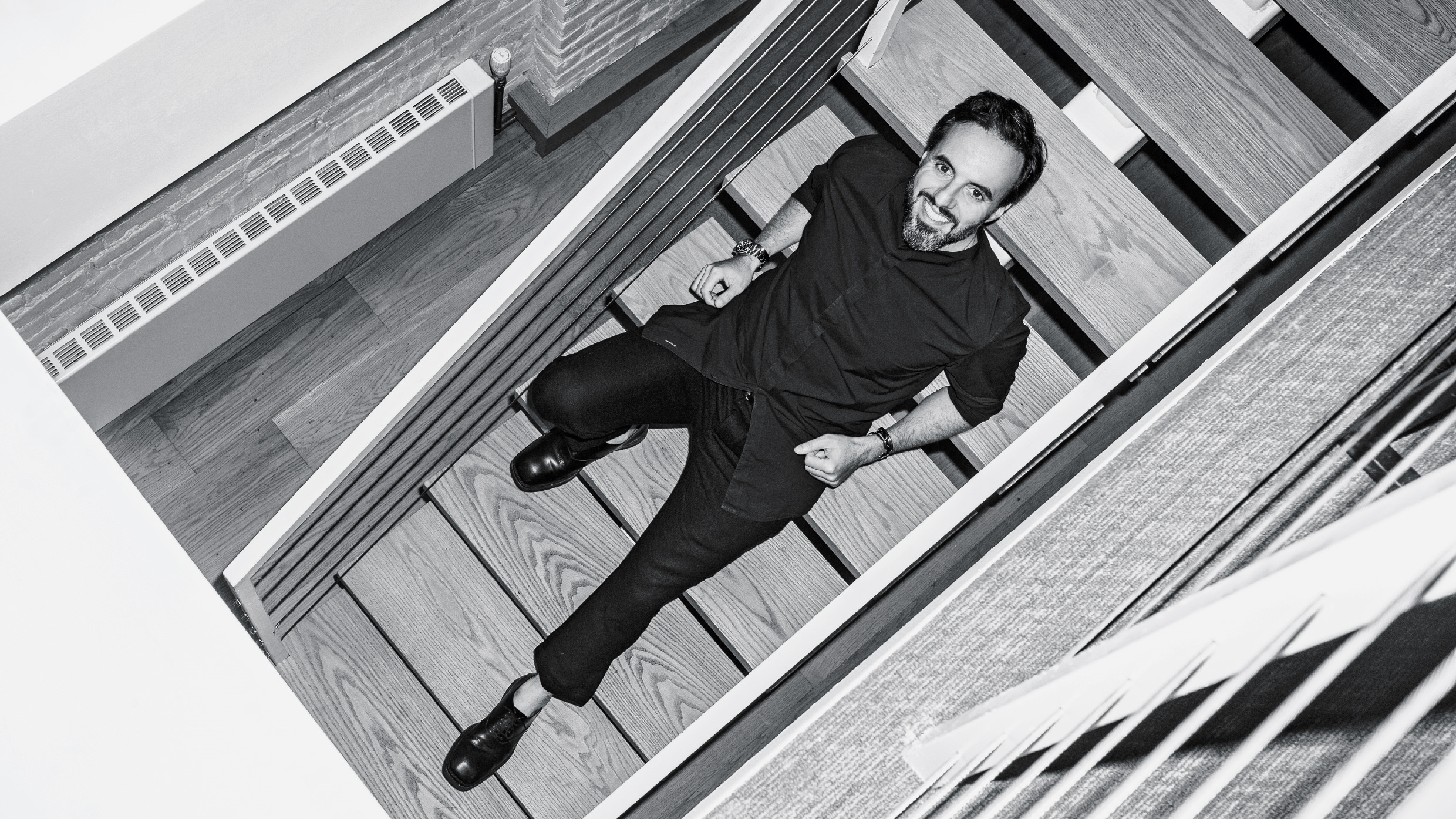The future of fashion is made-to-order, according to Farfetch CEO José Neves
In September, a decade after he began knitting together an online marketplace for independent boutiques across the globe, Farfetch founder and CEO José Neves took the company public. It’s now worth more than $7 billion and encompasses the original platform (which sells items from more than 980 stores and brands), white-label e-commerce services for designers such as Thom Browne and Derek Lam, and even physical retail.
Fast Company: You launched Farfetch two weeks after Lehman Brothers collapsed in 2008. What was it like to debut a company that championed luxury fashion at such a moment?
José Neves: Starting a company is already scary. Starting a company in the middle of a financial storm was terrifying. There was this fear of Armageddon in the [fashion] industry. And here we were trying to start a very ambitious project: to create a platform for boutiques and brands. But there was also collateral beauty in the financial crisis. I’d been a shoe designer since the age of 22, and I knew the industry moved very slowly. I had wondered how open people were going to be to the internet—to a new concept and to [Farfetch’s online] marketplace model. [During the crisis] people were very open to new [sales] channels, new opportunities. There was less to lose.
FC: There are growing concerns today that we may be heading into another financial crisis. Do you have any lessons from 2008 for navigating that?
JN: The luxury industry is not only very resilient, but the shift from offline to online is pretty much still [happening] today. Only 9% of sales are happening online. So even in the event of a crisis, we think Farfetch is very well prepared.
FC: Since acquiring the legendary London boutique Browns in 2015, you’ve been experimenting with physical retail there and at the year-old Browns East in the city’s Shoreditch neighborhood. What does the store of the future mean to you?
JN: What Amazon is doing is fantastic with [its automated] Amazon Go [stores]. Alibaba is even further ahead, with its Hema stores in China. But what is being developed for convenience stores and grocers will not work in luxury: This is not about someone walking out with 10 Chanel bags without speaking to anyone. That’s not what Chanel wants, and that’s not what the customer wants. They desire an elevated experience where the human interaction is allowed to happen in a much more seamless way, enabled by invisible technology.
The first fundamental is removing the friction from the shopping experience so that [stores] can focus on [customers], on storytelling and experience. The second pillar is personalization. In the digital world, experiences are personalized. When I log on to Netflix, they know which series I’m watching, which episode I was on. They are able to recommend other things coming up. Retailers know nothing about you coming in—and learn nothing about you when you go out. It can’t continue like this.
FC: Do you think customers are wary of how their data is being used to enhance their experiences in ways that they want and ways that maybe they don’t?
JN: All of this needs to be opt-in. [Shoppers have to be aware that] there is a trade-off between making yourself known when checking into the store and allowing your data to be used. But the thing is, no one’s selling advertising here. The luxury brands are not selling advertising. The reason to collect data is to improve the [user experience]. We are talking about brands that started in the atelier business and only gradually moved to ready-to-wear. Very gradually, they’re moving to technology. The need to protect the privacy of their customers and [deliver] very discreet service is paramount.
FC: As you create more direct relationships with fashion brands and start selling them on the Farfetch marketplace, are you introducing competition among the boutiques that have long been your partners?
JN: Farfetch is an enabler for the entire industry. We see [fashion] as an ecosystem where every creature needs the other. The big brands need the small ones, because that’s where they go to hire the amazing creative minds, the Virgil Ablohs, to be their creative directors. The small [designers] need the boutiques, because these stores will be the first to pick up their collections when they come out of Parsons. And the consumer benefits because fashion becomes more culturally relevant and exciting.
The fashion industry should never forget that people can buy other things, like [apartments] and experiences. By keeping this ecosystem alive and creating an industry that is full of creativity, new voices, and new talent, everyone wins.
FC: You relaunched your shoe brand, Swear, last year to create hyper-personalized sneakers. Is customization going to be a big part of fashion in the future?
JN: The biggest problem in fashion is overproduction. The way fashion works—where merchandisers and buyers take guesses on what people are going to buy and where [they’ll buy it]—is extremely inefficient. The supply never meets the demand in a perfect way. That has made fashion among the most polluting industries in the world. The most powerful way to tackle this problem is to move from a system of ready-to-wear to a system of made-to-order. And if you’re going to do it made-to-order, you may as well personalize it, because fashion’s all about the manifestation of individuality. But the industry will have to adapt because obviously factories are not used to [this].
At Swear, we’re working with factories to shorten [manufacturing] times. It’s now two weeks, but it should be two days, then overnight. The manufacturing challenge is very much an organizational problem; it’s not technological. It takes literally two hours to cut the leather and the pattern, and then stitch a pair of shoes. But the factories are organized to receive an order in bulk, and plan the production a month, two months out. Production at scale is cheaper, yes. But you have to offer discounts of 30% to 40% for what you [over]produce, and all that money goes away, and you’re damaging the planet. [Made-to-order] is about doing something that is right for the industry, but [also] makes the whole proposition compelling for the consumer.
FC: How do you plan to foster innovation now that the company has gone public?
JN: We’re now 3,000 people, and as we become a global business there is a natural tension between investing an extra dollar in optimizing the core business, or investing that extra dollar in an idea that may—or may not—work. That tension is the innovator’s dilemma. [In September] we launched the Dream Assembly accelerator, which [supports] 10 startups. We had 150 applications from more than 20 countries. This just began, and we’ll have a second, third, and fourth cohort. Google is a huge source of inspiration. They’ve optimized the core business, which is advertising, but they do not give up on funding constant moonshots.
FC: Having been a software developer since age 19 and a shoe designer almost as long, you have a unique perspective on technology and fashion. I think it’s clear that fashion can learn a lot from technology. What can the tech world learn from fashion?
JN: Most people don’t think programming computers is a creative endeavor, but software [development] is inherently creative. You sit in front of a computer and there’s a blank canvas and you are solving problems. And fashion is not just creative. It has elements of functionality and industrial design: Clothes are meant to be worn. Our team is a big melting pot of people coming together from the luxury and fashion worlds and the tech world. We learn from each other.
Stitches in time: Neves’s other companies laid the foundation for his success with Farfetch.
Swear: Neves’s 22-year-old London-based shoe brand, Swear, anticipated the rise of streetwear. The company recently pivoted to selling unisex shoes that can be completely customized via Neves’s Platforme software.
B Store: In 2001, he launched the Savile Row boutique B Store, which quickly became known for selling and championing emerging designers. The store closed in 2012.
Platforme: Neves created this customization platform in 2015, which enables brands, including Fendi and Sergio Rossi, to create personalized products for customers.
Fast Company , Read Full Story
(32)



